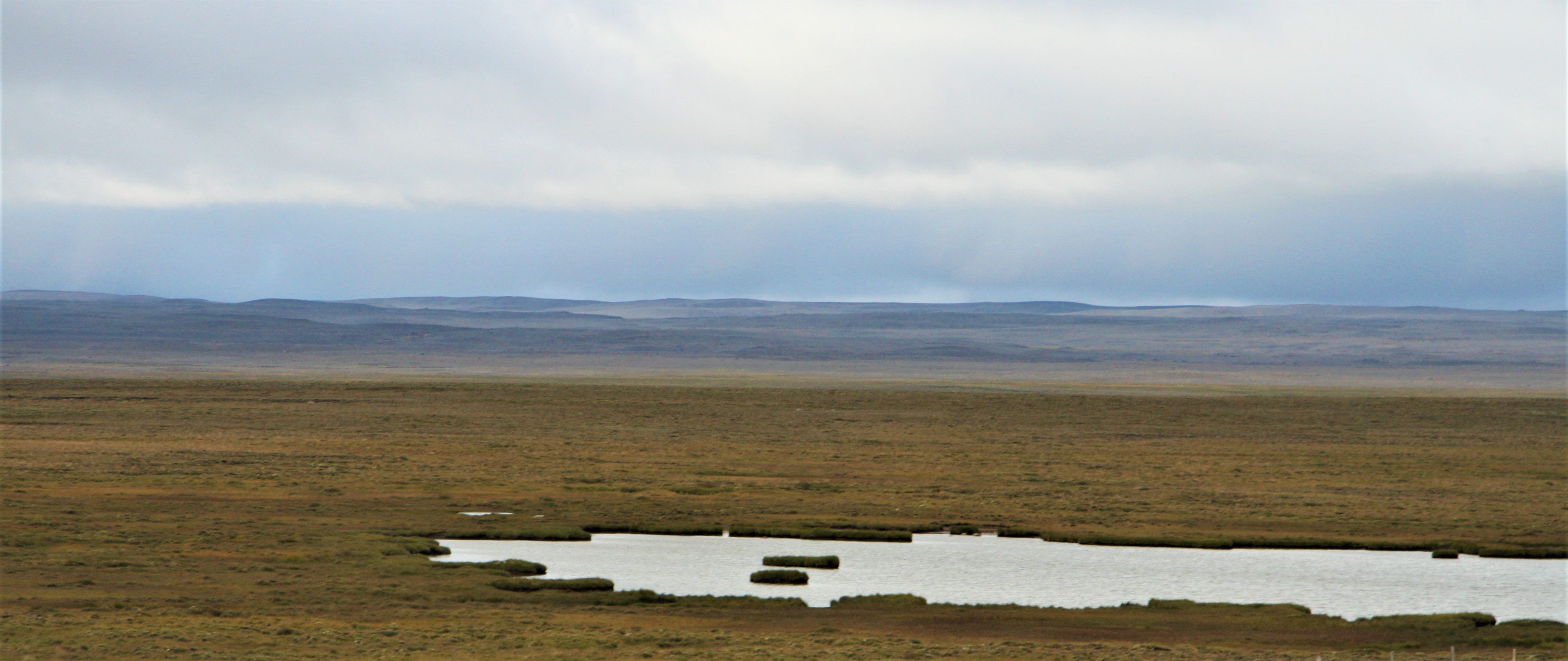Vinna við nýjar heimasíður Umhverfis- og orkustofnunar og Náttúruverndarstofnunar er í gangi. Heimasíða Umhverfisstofnunar er virk á meðan vinnunni stendur. Information in English
Gudlaugs- and Alfgeirstungur

Guðlaugstungur, along with Svörtutungur and Álfgeirstungur, was protected as a nature reserve in 2005. The nature reserve reaches from Hofsjökull down to the intersection of Blanda and Haugakvísl in the south-east corner of Blöndulón. The aim of the protection is to preserve the vast and lush wetlands, one of the biggest and most diverse palsa mires in Iceland. Over 23,000 pairs of pink-footed geese nest in the area, the biggest pink-footed goose nesting grounds in the world.
The area has a very high international protection value and has been a Ramsar area since 2013, as well as being classified as an International Bird and Biodiversity Area.
All traffic through the pink-footed goose nesting grounds within the nature reserve is prohibited from May 1st to June 20th. The nature reserve covers an area of 398.2 ha.
Natural conditions
Guðlaugstungur are in the northern part of Kjölur. The nature reserve lies north-west of Hofsjökull and reaches north towards Blöndulón. The landscape is characterized by extensive heathland, wetlands, palsas, heaths and sparse areas through which rivers and streams run. The area has highlands and lies between 550–700 meters above sea level. In Guðlaugsrústir, there is one of the biggest palsa mires in Iceland and is actually one of only a few areas where such remains can be found. The palsas are mounds or hills up to two meters high in a permafrost landscape that are formed when the overlaying soil layer is lifted up when ice forms under the surface of the peat soil.
At present, Guðlaugstungur is one of the biggest pink-footed goose nesting grounds in the world. Little to no sources existed on the nesting of the pink-footed goose in Guðlaugstungur until the latter part of the last century. In 1970, for example, only around 100 pairs of pink-footed geese were found, while at the same time, Þjórsárver was the biggest pink-footed goose nesting grounds in the world, with an estimated 12,000 pairs. The increase in the pink-footed goose population in Guðlaugstungur was first noticed around 1980, while their number in Þjórsárver dropped. Around the turn of the century, there were an estimated 13,600 pairs in the area, and in 2010, the population was an estimated 23,600 pairs. Iceland is the most important nesting ground for the pink-footed goose, and the population in Guðlaugstungur is estimated to be one-fifth of the world population of the species.
Other birds common in north Kjölur include the golden plover, dunlin, meadow pipit and snow bunting.
International Importance
Guðlaugstungur is one of six Ramsar areas in Iceland. The main goal of the Ramsar Convention from 1971 is to protect wetlands, with particular emphasis on important bird areas. At present, 90 nations have committed to the Ramsar Convention, and there are around 2,300 Ramsar areas in the world (in 2020). In 2010, there were an estimated 23,600 pairs of pink-footed geese in the area, a quarter of the Icelandic population. Furthermore, it is by far the biggest pink-footed goose nesting ground in the world, which puts Gunnlaugstungur on the list of internationally important bird areas.